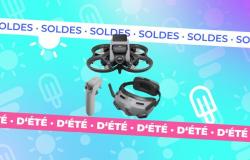
The impact of the DART spacecraft on the asteroid Dimorphos on September 26, 2022 caused the ejection of numerous fragments. Thanks to detailed observations from the Hubble Space Telescope, scientists were able to analyze the nature and distribution of this debris. This report focuses on the discovery of thirty-seven fragments resulting from the impact.
Background of the DART mission
Mission Objectives
NASA’s Double Asteroid Redirection Test (DART) mission aimed to test a method of deflecting asteroids by hitting Dimorphos, the satellite of the binary asteroid Didymos. The objective was to slightly modify the orbit of Dimorphos to assess the feasibility of this technique as a means of planetary protection.
The Didymos-Dimorphos system
Didymos, an asteroid 800 meters in diameter, and its satellite Dimorphos, 160 meters in diameter, form a compact binary system. Before impact, Dimorphos orbited Didymos in approximately 11.9 hours. The DART ship, weighing 500 kg, struck Dimorphos at a speed of 6.6 km/s, releasing considerable kinetic energy.
Hubble observations
Fragment detection
Images taken by the Hubble Space Telescope have revealed a population of thirty-seven fragments co-moving with Dimorphos. These fragments, measuring up to 7 meters in diameter, were dispersed at an average speed of 0.30 m/s. Their asymmetric distribution indicates an impact on a heterogeneous surface.
Fragment characteristics
The fragments observed have a total mass estimated at 5×10^6kg, or approximately 0.1% of the total mass of Dimorphos. They carry about 3×10^-5 of the kinetic energy delivered by the DART impact. The size and speed of these fragments suggest that they were ejected unevenly due to the varied composition of Dimorphos’ surface.
Impact analysis
Fragment distribution and dynamics
The distribution of fragments around Dimorphos is mainly concentrated to the west and south of the asteroid. This distribution could be due to topographical characteristics and the composition of the impact site. The majority of fragments are moving at a speed close to the escape speed of the Didymos-Dimorphos system, indicating a relatively slow ejection.
Consequences for the study of asteroids
Post-impact observations provide valuable insight into the mechanisms of debris ejection in a “rubble pile” impact on a celestial body. These results provide insight into the mechanical response of Dimorphos to an energetic collision, providing essential data for future asteroid deflection missions.
Risks to the Earth
Potential threat from asteroids
The study of fragments ejected from Dimorphos is crucial to evaluate the potential risks to the Earth. Although Didymos and Dimorphos do not represent a direct threat, understanding impacts and fragment ejections helps improve diversion strategies to protect our planet. Indeed, if an asteroid of significant size were to be diverted from its trajectory, the management of the ejected fragments would become a crucial issue to prevent them from representing a new danger for the Earth.
Future prospects
HERA mission
ESA’s HERA mission, planned for 2026, will travel to the Didymos-Dimorphos system to study the consequences of DART’s impact. HERA will make it possible to closely analyze the ejected fragments and collect additional data on the composition and structure of Dimorphos.
Additional comments
Hubble will provide a new opportunity to observe the Dimorphos fragments in July 2024, when the geocentric distance decreases to about 0.6 AU. These observations will make it possible to verify the evolution and dispersion of the fragments over time.
The DART impact on Dimorphos generated a population of thirty-seven fragments whose in-depth study provided crucial information on collision dynamics and asteroid properties. These discoveries enrich our understanding of debris ejection processes and pave the way for effective planetary protection strategies.
Source de l'étude : https://iopscience.iop.org/article/10.3847/2041-8213/ace1ec The Dimorphos Boulder Swarm David Jewitt1, Yoonyoung Kim2, Jing Li1, and Max Mutchler3 Published 2023 July 20 • © 2023. The Author(s). Published by the American Astronomical Society. The Astrophysical Journal Letters, Volume 952, Number 1 Citation David Jewitt et al 2023 ApJL 952 L12





